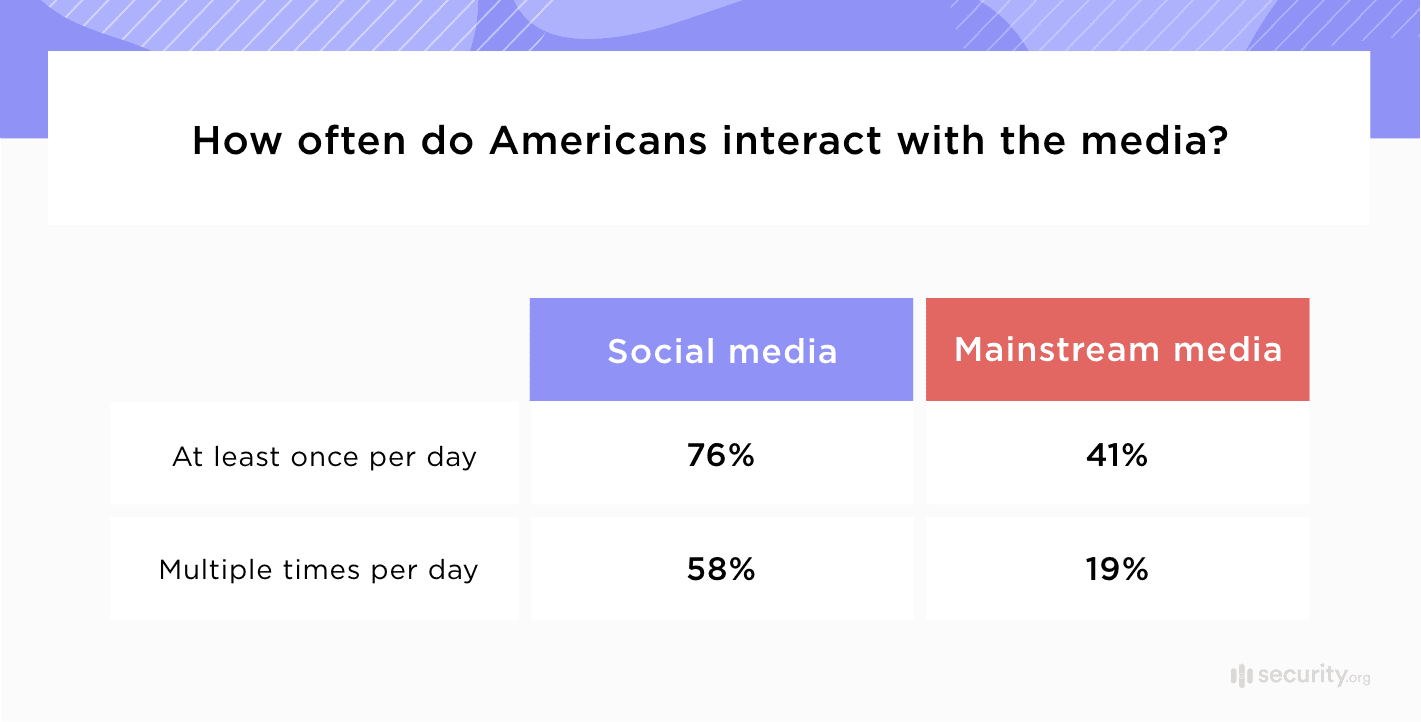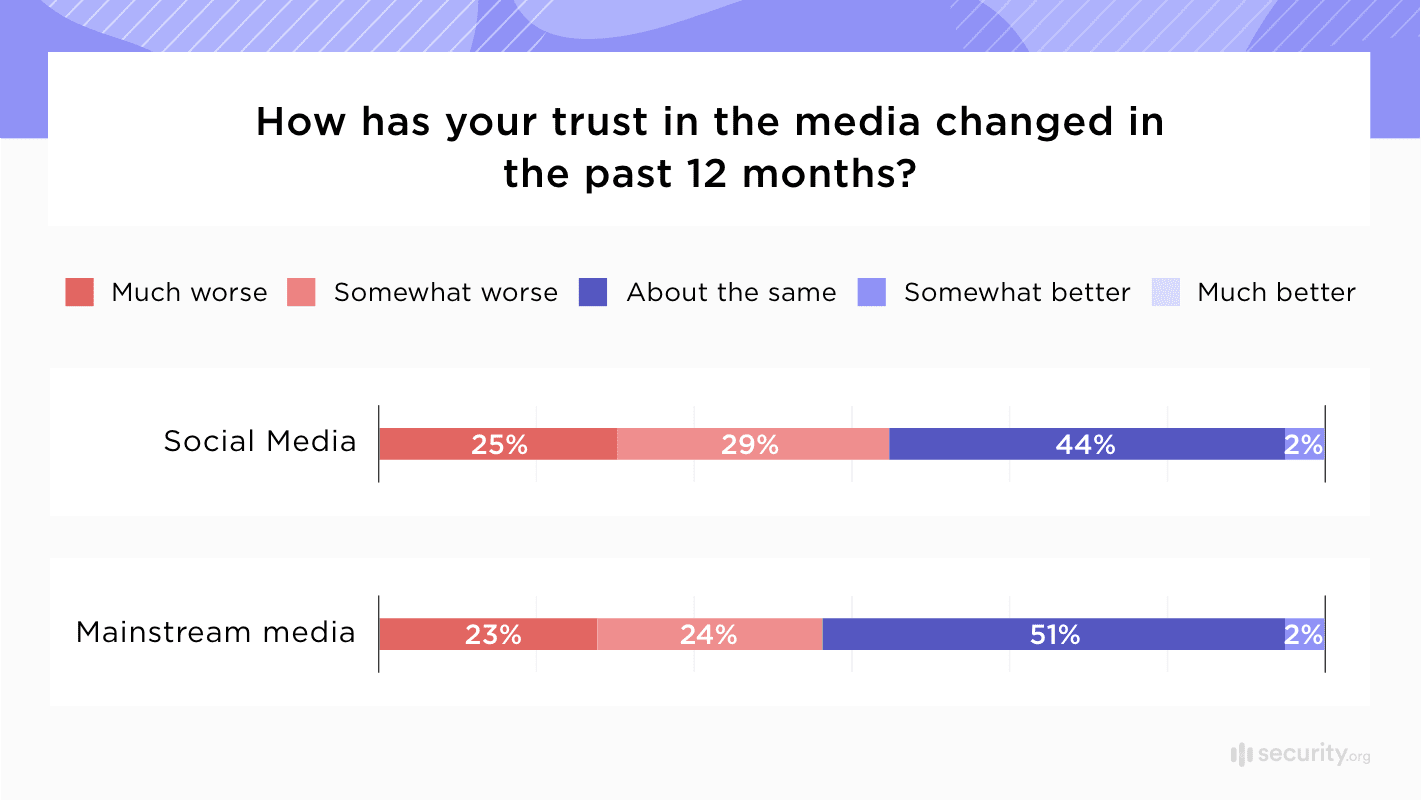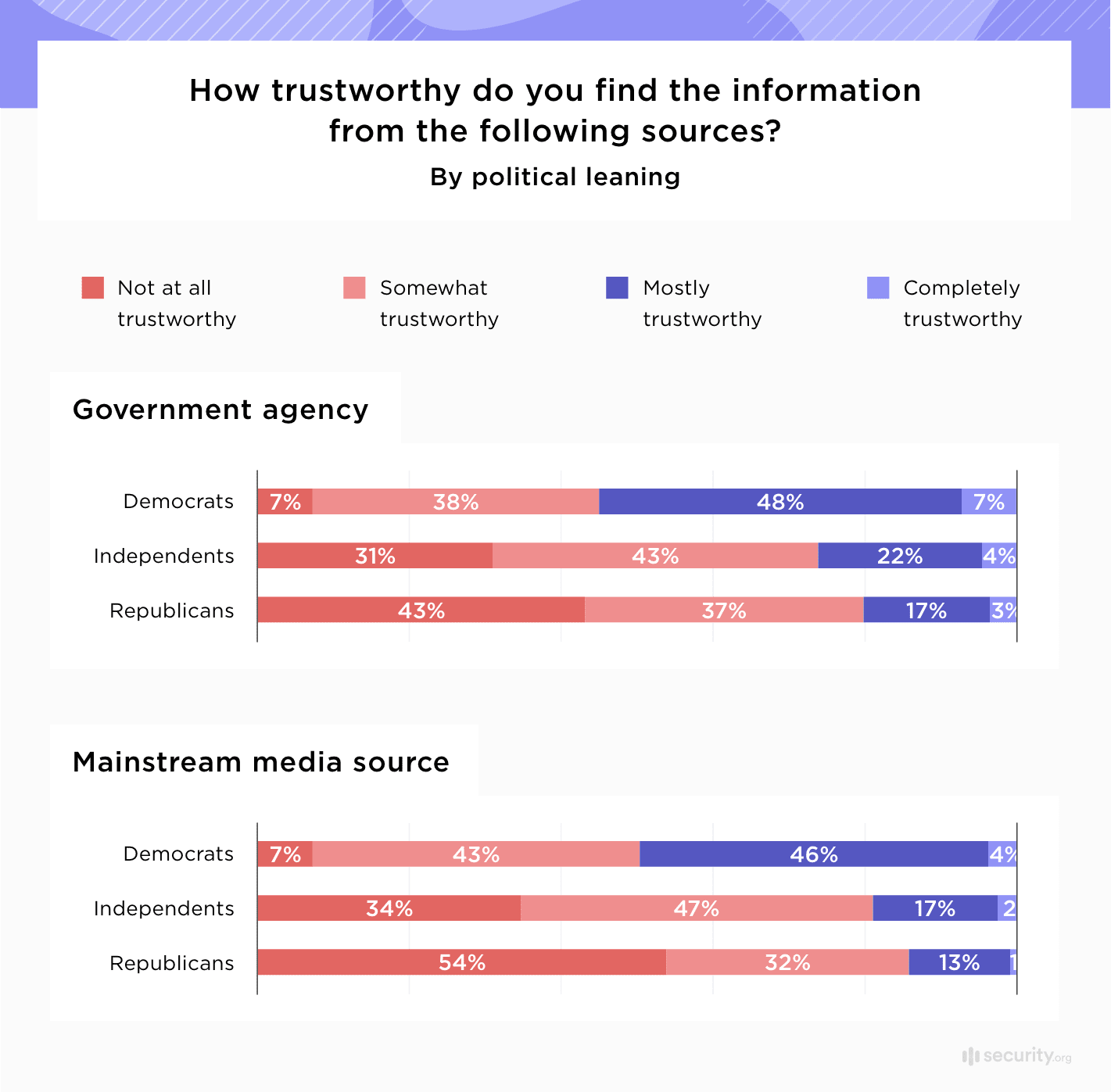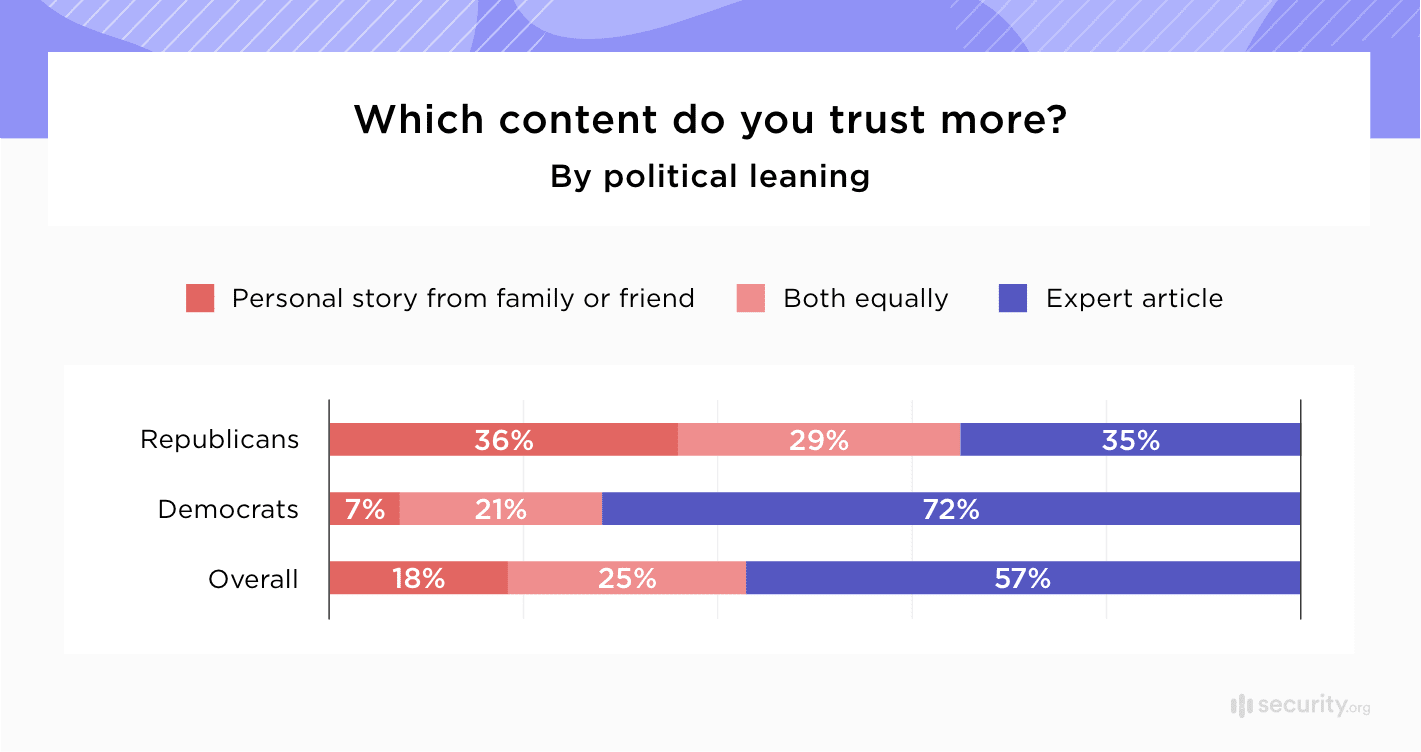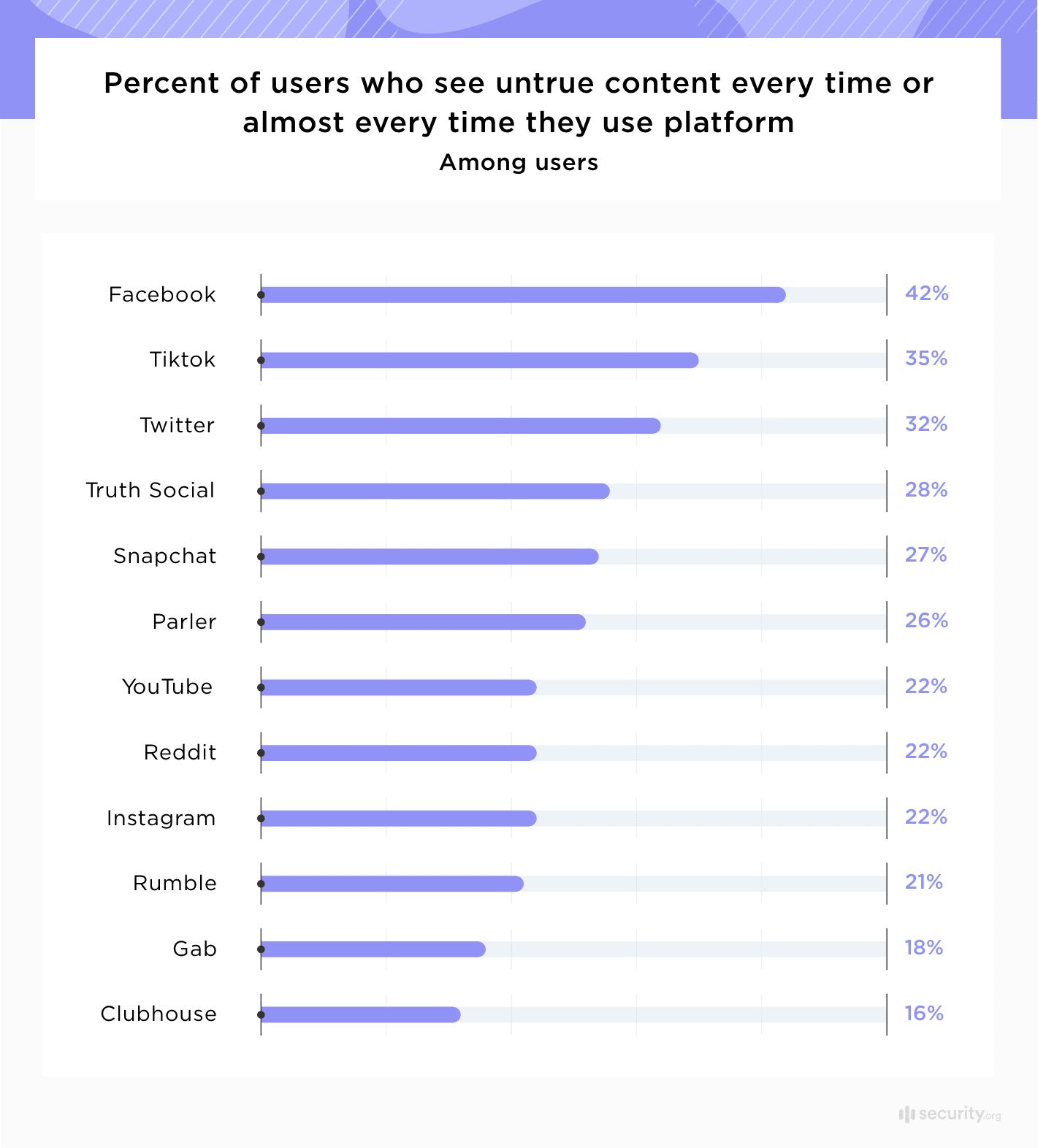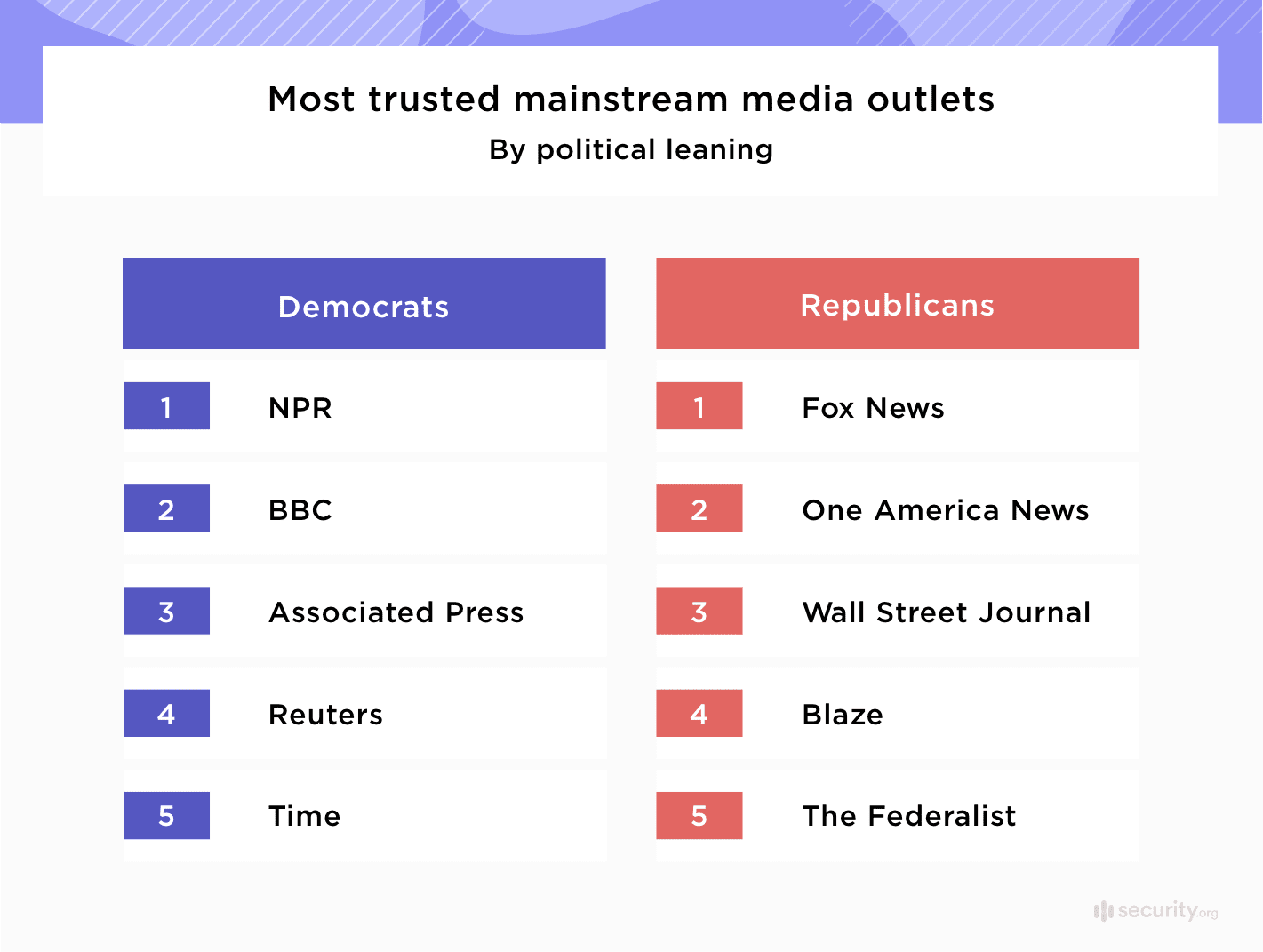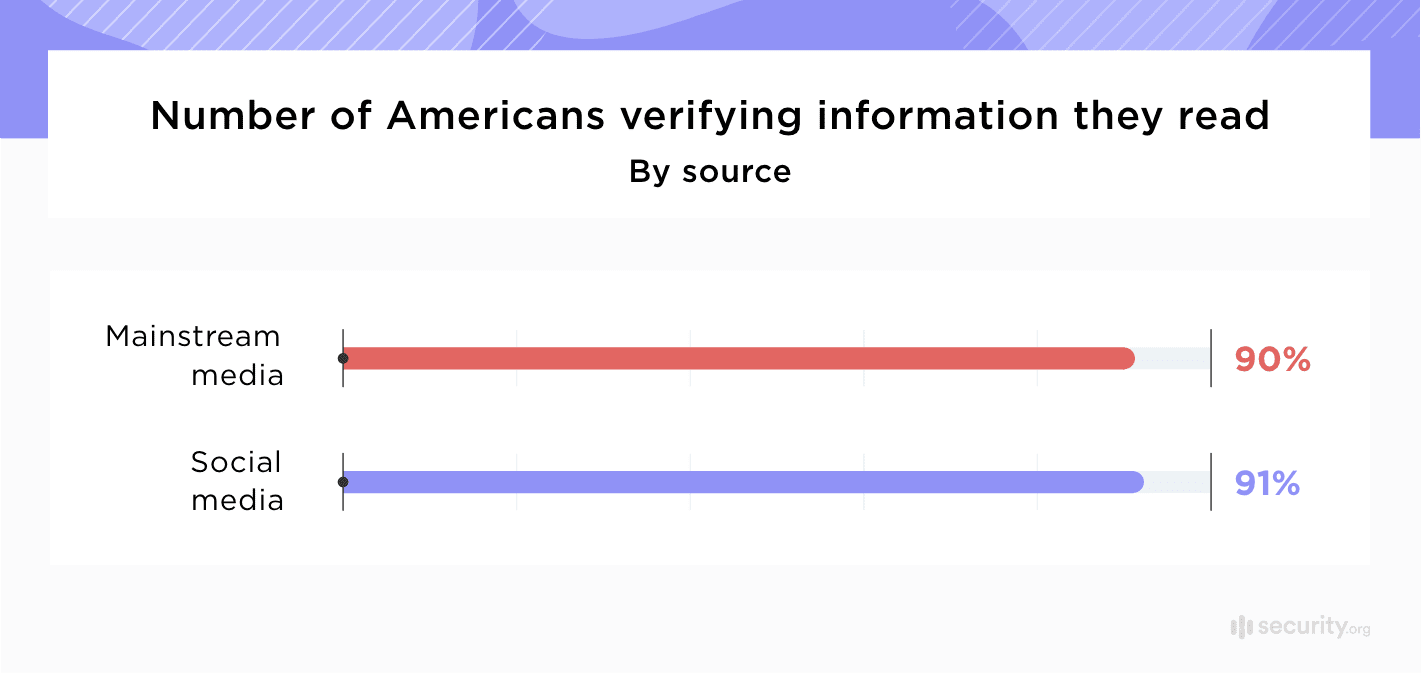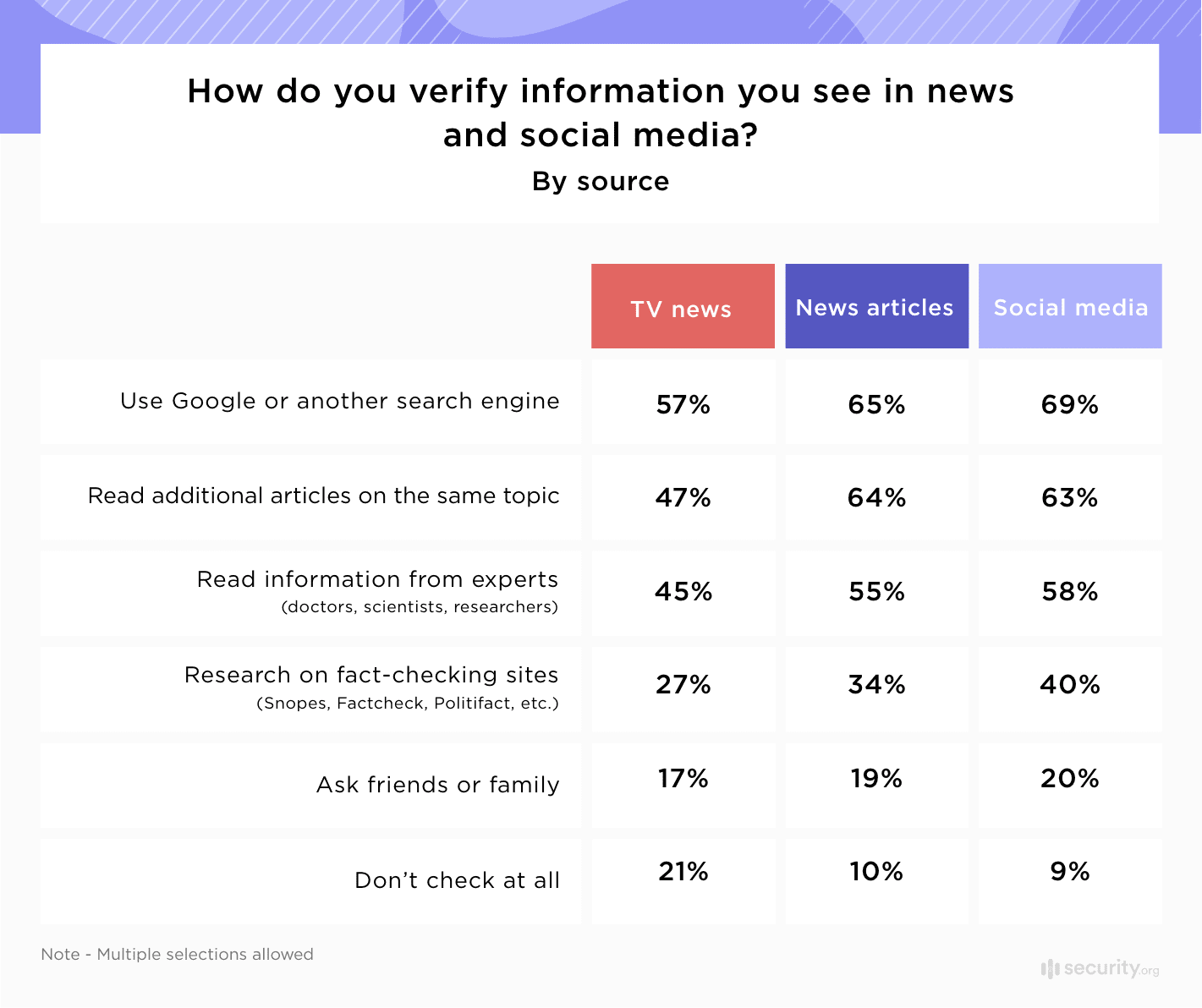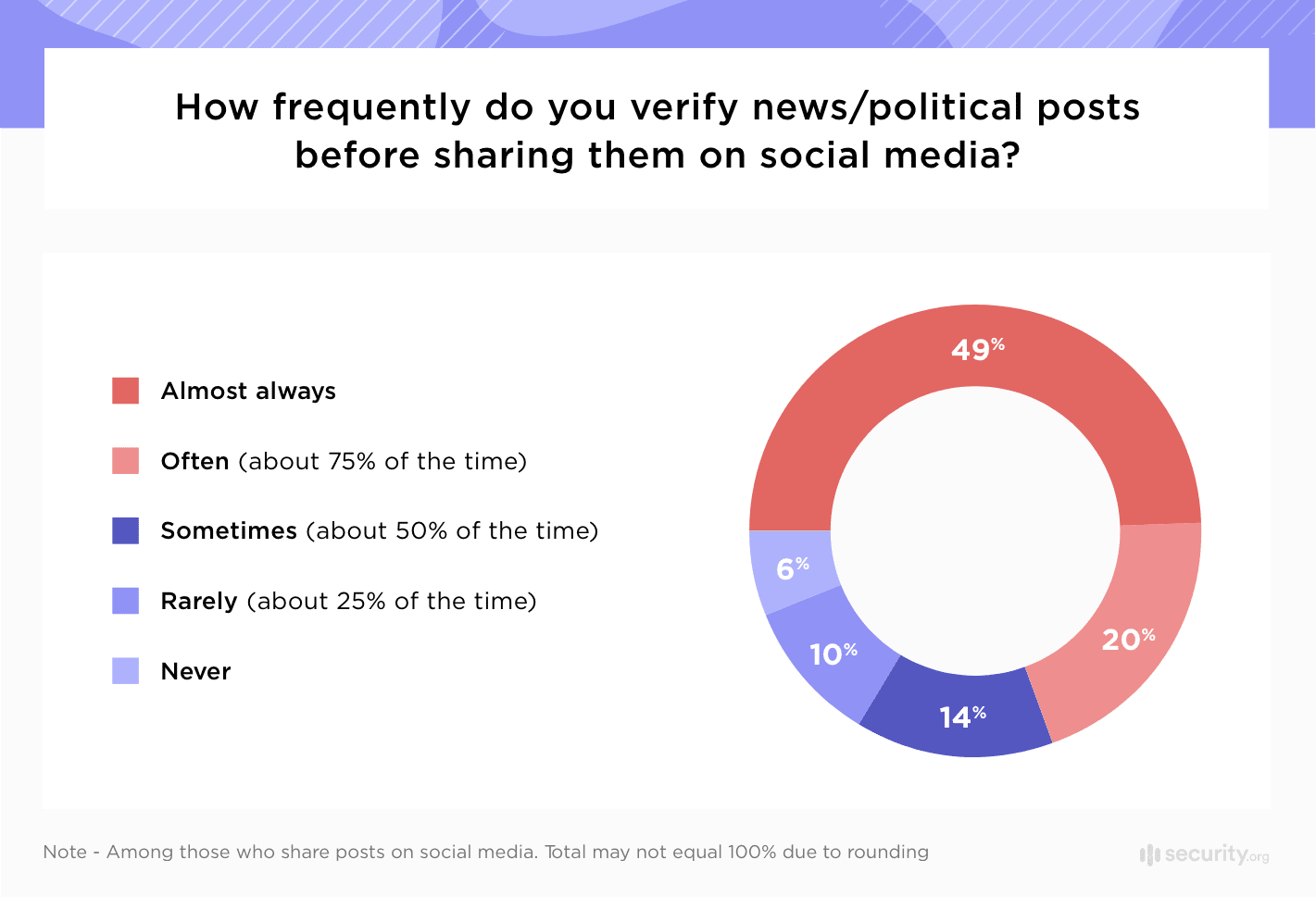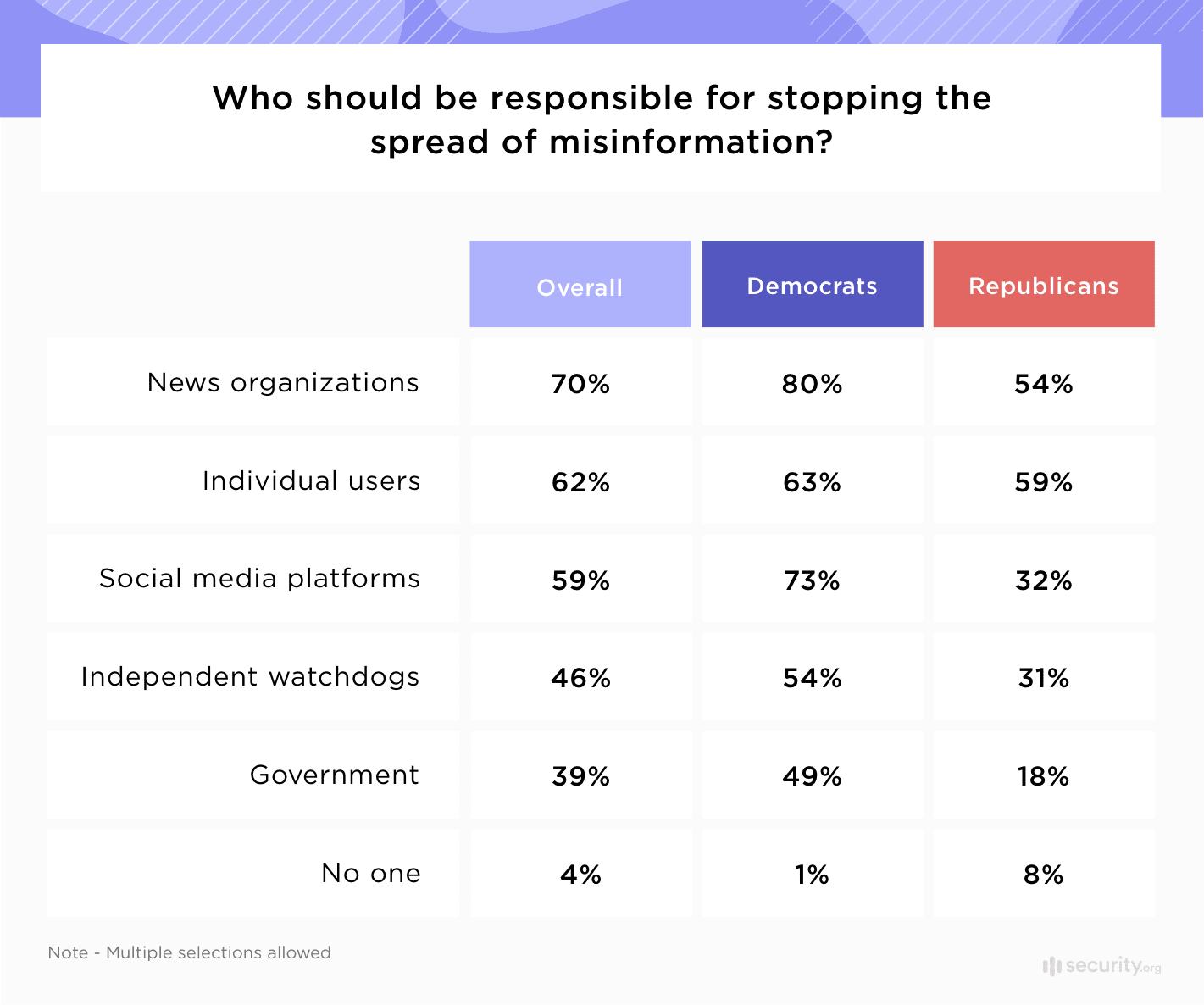90% of People Claim They Fact-Check News Stories As Trust in Media Plummets
Could concerns about misinformation be driving Americans to improve their media literacy?

As the popularity of social media surpasses traditional news sources, information has grown more unreliable, and “fake news” becomes harder to detect. The same digital platforms that empower global communication seed doubt and spread misinformation.
The misinformation and disinformation that have influenced elections and hampered public health policies also damaged faith in all forms of media. Meanwhile, political attacks on some news sources have divided Americans further into partisan camps.
The nation is united, however, in recognizing the problem. Our second annual study of more than 1,000 people revealed that nine out of 10 American adults fact-check their news, and 96 percent want to limit the spread of false information.
Other key findings:
- Half of the country said they trust information from both news and social media less today than 12 months ago. Only 2 percent said their trust has grown over the same time period.
- Though most claim to verify information they read, they don’t always do it before sharing posts on social media. More than half of social media users who share news or political posts sometimes do so without verifying the facts.
- Compared to social media posts and news articles, Americans were least likely to verify information they heard on television news. One in five people said they never double-checked information from television news, which can be heavily biased.
Trust in Social and News Media Has Declined in the Past Year
Over the past few decades, the explosion of digital platforms has dramatically reshaped the informational environment. Where mass media operations once vetted and monopolized news coverage, anyone can instantly publish news today, as long as they have an internet connection.
Whether this paradigm represents freedom or danger, it has undoubtedly proved popular.
Today, three in four Americans use social media at least once a day, but 41 percent said the same about mainstream news media.
Though many people rely on social and news media to get information, public opinion of both sources is dropping. One-half of Americans hold the media in lower regard than they did just twelve months ago, and one-quarter say their trust has grown “much worse” over that time. Only two percent of adults said their trust improved.
These sentiments were consistent across age groups and genders but differed widely by political affiliation. Following assaults on the mainstream media by GOP leaders, many Republicans have little confidence in mainstream and government information sources. According to our research, 53 percent of Republicans found mainstream news not at all trustworthy, compared to just seven percent of Democrats and 35 percent of independents.
It’s likely that this skepticism has led Republicans to trust personal stories from friends and family as much as articles sourced from multiple experts. Democrats were much more likely to trust expert-sourced articles over personal anecdotes by a 10-to-1 margin compared to Republicans.
Despite Its Popularity, Few Trust Information on Social Media
Despite social media’s broad popularity, it hasn’t earned the trust of its users. Nearly 200 million Americans interact with social media at least once each day yet a third of them “never” or “rarely” believe what they find.
Among the many platforms available today, Facebook is the social media site consumers trust least. Despite the company’s widely-publicized efforts to eradicate misinformation, 42 percent of Facebook users said they frequently find questionable posts on the platform. Only 10 percent regularly trust content they see on Facebook.
Following its admission of mishandling 2016 election information, it’s little wonder that users regularly doubt the validity of content they find on Facebook. Surprisingly, Instagram – owned by the same parent company, Meta – fared better. Only 22 percent of users regularly saw dubious content on the platform.
TikTok had the second-highest number of users who frequently saw content they doubted was true. This distrust in TikTok may stem from its Chinese ownership that’s received a great deal of scrutiny from the U.S. government.
Notably, the platforms people had least doubt about represented smaller online communities that tend to self-select along ideological lines, such as the conservative-leaning Gab and Rumble. Where tech giants attract billions of battling users across the political spectrum, these less populated platforms cater to narrower audiences, which could reduce disagreement on facts among their users. The larger audiences of mega social media sites could make them more attractive targets for those actively spreading misinformation.
Americans Are Highly Selective About Which Traditional Media Sources They Trust
Mainstream media outlets fared little better than social media platforms when it came to trust. Participants in our research rated the credibility of 25 national news sources to generate a combined overall trust grade. Only four outlets earned positive trust scores.
Politics also played a significant role in Americans’ views on news outlets, with Democrats and Republicans sharply differing over their most trusted sources. The most trusted traditional news outlets for Republicans and Democrats were unique for each group. People identifying with either political party seem to inhabit separate information bubbles, which means it can be hard for Americans to even agree on the basic facts of news events.
With so few news sources worthy of trust for people across the political spectrum, many people have decided to verify information on their own.
Nine in Ten Verify Information They Consume on Mainstream and Social Media
Though Americans are confident in their ability to recognize fake news, current mistrust drives most to verify information they see both in traditional and social media. Nine of ten consumers use at least one method to check that the information they read is accurate.
Overall, Americans relied on a few main methods for verifying information they found questionable on social media and TV news or news articles. Doing a web search was the most popular way people sought out further information about a news event, and reading multiple articles on the same topic was also a common verification practice.
Though cable news outlets weren’t considered trustworthy by many in our study, people were least likely to verify information on TV news compared to information from news articles or social media posts. This is likely due in part to the nature of TV news: when reading news on a computer or phone, more information is just a few clicks away. TV audiences also tend to stick with politically aligned networks that provide confirmation bias, which can create little desire for scrutiny. Additionally, daily television viewers were eight years older than daily social media users on average, and we found that older media consumers were less likely than younger consumers to verify news information.
Overall, we found most Americans try to verify information that they read. However, they’re less careful with the information they share on their social networks.
Not Everyone Checks Information Before Sharing It on Social Media
Americans agree that misinformation is a problem: 96 percent want false facts contained. Unfortunately, many of these people also share unverified posts with their own social networks, and few agree on who should be responsible for policing the issue.
Overall, 56 percent of Americans publicly share political or news posts on social media, with younger generations the most likely to repost stories online. Among adults who share political or news posts on social media, less than half make sure to check facts before reposting, and about one out of six “rarely” or “never” verify information before sharing it.
Despite this evidence of personal irresponsibility, nearly all Americans believe someone should stop the spread of misinformation. Opinions varied, however, about who should be in charge of the massive task.
Across the board, Democrats were more likely than Republicans to believe that groups like the government, news media, and independent watchdogs should be responsible for stopping the spread of false information. Older Americans were more likely to support independent review, while younger respondents preferred trusting the government with the difficult job of finding and eliminating misinformation in the media.
Stopping the Spread: How You Can Help Fight Misinformation
With media mistrust running high and responsibility fractured, Americans need ways to police “fake news”. Misinformation and disinformation can be very deceiving and can spread far more quickly than truth, so we all must play a part in shutting down falsehoods, especially in a midterm election year.
Security.org developed an informative guide for protecting against misinformation, which advocates using your head, using available information, and being a responsible cyber-citizen.
- Use your head: Many consumers rely on their guts to discern truth from fact, but instincts can be manipulated or deceived. When digesting the news, always employ critical thinking.
- Be skeptical – In this new media environment where anyone can post information online, many stories are published without vetting, so don’t believe everything you read. Recognize that having a website or blog doesn’t make someone a journalist. Beware of articles or posts with a lot of anonymous sources or unattributed facts.
- Be thorough – Recognize the difference between opinion/editorial content and real news. Many media outlets (especially television) blur the line between opinion and facts. Also, commit to reading beyond eye-catching headlines to explore the contextual facts of a story.
- Be aware of the source – Misinformation/disinformation is often uncovered by considering the source of a story. Assess whether the outlet is familiar or authentic, determine whether the factual background is sound, and consider who might benefit from the angle presented. If any of these questions raise a red flag, perform extra verification.
- Use available information: Verification is the most reliable tool for separating truth from lies. The same technologies that empower misinformation put the solution right at your fingertips. Don’t rely on one source: “read laterally” to diversify your knowledge base and confirm that other reports corroborate a story. In addition to browsing multiple news outlets, check fact-checking sites (like Snopes, FAIR, and FactCheck.org) for independent investigations into news stories.
- Be a responsible cyber citizen: Identifying lies isn’t enough to defeat misinformation. We must also help stop the spread of false information and promote reliable information. Here are a few ways to help:
- Ensure all information in a political post on social media is accurate before sharing and use your feed to verify or debunk questionable stories.
- When friends or loved ones share misinformation, correct them calmly and empathetically. Shaming them can ruin relationships and entrench unfounded beliefs, so it’s ok to send a private message rather than posting a comment on a dubious post.
- Teach your children how to identify good and bad sources of information online, making the next generation less susceptible to the dangers of misinformation.
Conclusion
The First Amendment provides broad protection to media outlets and special legal provisions shield tech companies from liability for the content shared on their sites. Americans treasure these speech and press freedoms but resent the spread of misinformation they allow.
This conflict has sparked a debate over prospective regulation. Federal forces are considering holding digital platforms accountable for misinformation as state governments simultaneously seek to limit social media censorship.
The big loser in this battle is the public. Our survey shows Americans are increasingly distrustful of media sources, expend great effort to verify facts, and yearn for some entity to take responsibility for limiting the circulation of lies.
Our Data
Security.org conducted an online survey of 1,004 U.S. residents aged 18-74 in June of 2022. The median age was 45. Respondents were representative of the U.S. population in terms of gender, age, and ethnic background. 53 percent of respondents were Democrats, 23 percent were independents or belonged to no party, and 24 percent were Republicans.


